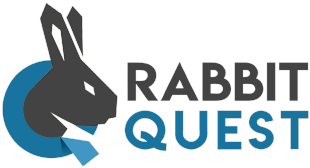What is the best time to share your communication?
Based on our experience with over 250 partners, we share the best times to share internal communication about health and vitality. Together, let's foster greater vitality in the workplace!
Time to read: 5 minutes
Internal communication is the heartbeat of your organization. Do you want to maximize the impact of your communications about vitality programs? Have you sometimes found that your messages and posters garner too little response? Then it's essential to consider the day and time of your communication.
The days often seen as the most effective for internal communication about vitality programs and other key topics are:
Monday
-
Start of the workweek: Monday marks the beginning of the workweek, making it an ideal time to motivate and engage employees in new initiatives or reminders.
-
Fresh start: After the weekend, employees are often fresher and more receptive to new information and motivation.
-
Setting the tone: Effective communication on Monday can set the tone for the rest of the week and contribute to a productive and healthy workweek.
Tuesday
-
High productivity: Tuesday is often one of the most productive days. Employees are already in their work rhythm but not yet overloaded with work as they might be later in the week.
-
Less full inboxes: By Tuesday, many employees have already caught up with their emails, making messages about vitality more noticeable.
-
Better response: As employees are in the middle of their workweek, there's often a better chance of active participation and response.
Thursday
- Planning for the next week: Thursday offers an opportunity to look forward to the next week, with possibilities for planning and anticipation of upcoming vitality activities.
Days better to avoid
-
Wednesday: Often considered a 'dip day', Wednesday falls right in the middle of the workweek. On this day, employees might feel overwhelmed by workload or look forward to the weekend. This can lead to less receptiveness to new information or initiatives, such as messages about vitality.
-
Friday: Traditionally, Friday is when people start gearing up for the weekend. Attention may wane, and the motivation to engage with work-related matters, including internal communication, can decrease.
Fantastic, but at what time?
Morning (Between 10:00 and 11:00 AM)
-
After the morning rush: This timing avoids the early morning hustle, where employees often first focus on their emails and urgent tasks of the day, avoiding the meeting rush hour.
-
Good focus: Employees are generally still fresh and alert in the late morning, meaning messages have a higher chance of being read and remembered.
-
Room for action: Communication in the late morning gives employees time to act on or respond to the information during the day.
Early afternoon (Around 2:00 PM)
-
After lunch break: Employees often return from their lunch break with a new energy boost, making them more receptive to new information.
-
Avoiding the afternoon dip: By communicating just after lunch, you avoid the afternoon dip that often occurs around 3:00 PM, when productivity and alertness can decline.
Key considerations:
-
Avoid late in the day: Late afternoon (after 4:00 PM) is often advised against, as people are already preparing for the end of their workday and may have less attention for new information.
-
Consistency and routine: Creating a routine, such as sending weekly updates at a fixed time, can help build expectation and routine among employees.
By taking into account the days and times you communicate, you'll find that your internal communication about vitality programs creates more engagement among your team. Good timing is the key to successful communication. By strategically planning your messages, you ensure maximum engagement and impact. So, experiment with Mondays, Tuesdays, and Thursdays, and discover the power of optimal timing!
Your next initiative is sure to be a great success!
Interested in learning more about the power of effective internal communication? This blog provides insights on how to effectively encourage participation in health initiatives.




